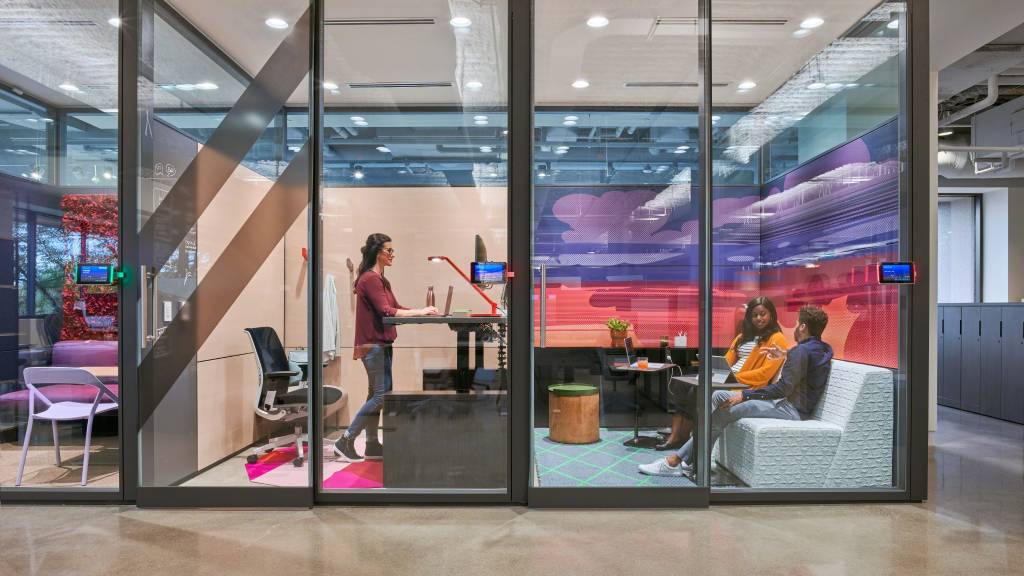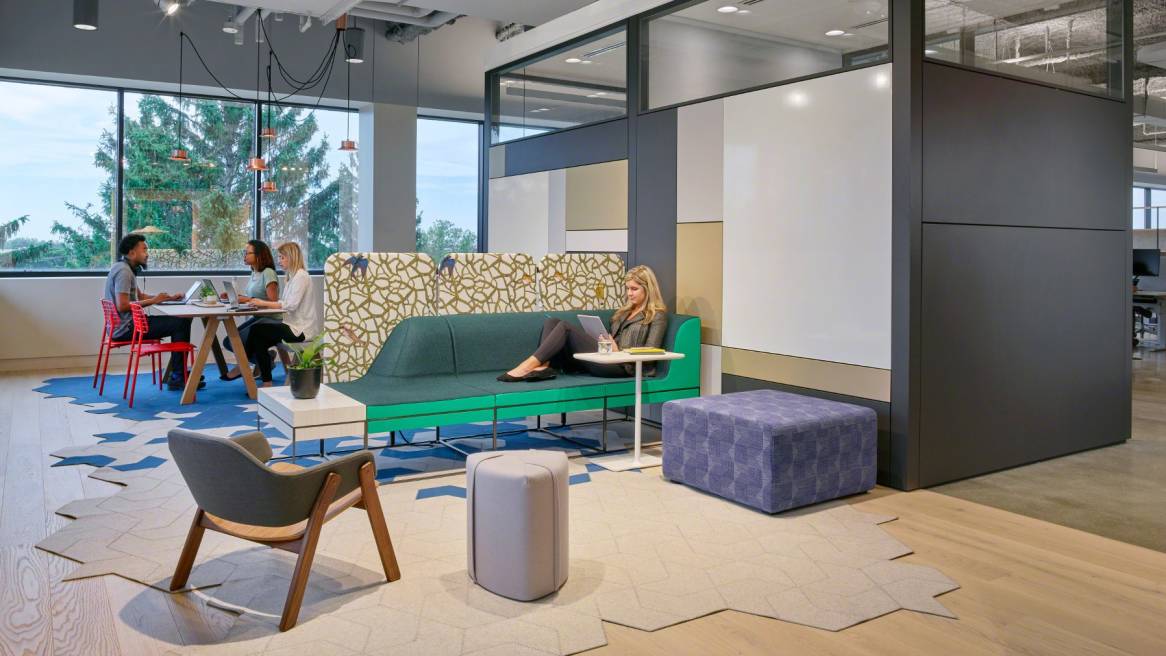Transforming IT at Steelcase: An Agile Case Study
Research + Engagement
“This project has created a sense of pride within IT because we were key consultants in the design, prototyping and implementation. It wasn’t done to us. It was done with us.”
Tom HunnewellDirector, Steelcase Information Technology
Research, design, and Applied Research + Consulting teams led a series of activities to discover how IT teams were working and how they preferred to work to achieve their goals. A Workplace Advisor Study used sensors installed in the former workplace to measure and analyze how people were using their space. Findings included:
Space Study
- IT spaces were underutilized. Individual workstations, small group and large meeting rooms were all occupied less than 30 percent of the time.
- Most collaboration was happening in small or mid-sized groups. People reported collaborating half of the time.
- Video display and acoustical privacy were in high demand.
- While only 30 percent of IT team members were designated as mobile workers, an additional 45-50 percent of people demonstrated moderate levels of mobility.
- About 20-25 percent of IT exhibited low mobility, including people who were away from their desks for less than 30 minutes at a time.

Culture Survey
The Steelcase Applied Research + Consulting Team (ARC) typically works with customers to help them understand how their culture, processes and tools impact their workspace (and vice versa) to support their company’s goals. In this case, ARC worked as internal consultants surveying hundreds of IT employees about their culture. Some findings included:
- People said small teams worked very well, but larger teams were not as effective.
- Conflicting priorities and bottlenecks slowed progress and kept teams from working well together.
- There was an opportunity to increase trust among team members.
- People desired greater connections within the larger IT community.
- It was challenging to adjust to the ebb and flow of work that needed to get done.
- More mentorship was needed regardless of age. People wanted more opportunities to grow their skills and learn from others inside and outside of their discipline.
- A siloed work process kept IT from operating as a unified team.


“Having people engaged in influencing their workplace gives them a sense of authorship and ownership, and makes a big difference in accepting a new paradigm.”
Tom HunnewellDirector, Steelcase Information Technology
These findings were combined with “day in the life” interviews where researchers asked different IT team members to walk them through their typical work day. The collection and synthesis of all of this information helped the project team delve into people’s challenges and expose what was working well and what was causing headaches.
Employee workshops were conducted to help people create a framework for their future work experience. For example, IT employees wanted to encourage learning across the department instead of keeping knowledge in silos.
Agile User Prototypes
A prototype experience was designed to inform the future IT space and support the culture change taking place. Groups representing each of the three types of IT teams moved into a basic space and began to experiment. Leaders empowered them to hack their space — grab couches, move desks, commandeer monitors — finding whatever they needed to do their best work.
Teams tried different studio sizes and configurations within those spaces based on their process and needs. In addition, prototypes enabled new behaviors and permissions for teams to ‘own’ their space over time, make content visible and invite customers into the process. Beyond the team studios, other support settings helped designers learn about the bigger ecosystem of spaces that support agile culture and processes.
Open forums like town halls and an intranet blog offered full transparency into what was happening, what was driving change and what team members were learning. Regular communication from leadership, videos and photos of living prototypes were shared in near real-time. Pocket-sized pamphlets were created for every IT employee as a constant reminder of the department and project goals.
NEXT CHAPTER – Leadership + Communication
PREVIOUS CHAPTER – Building the Practice


